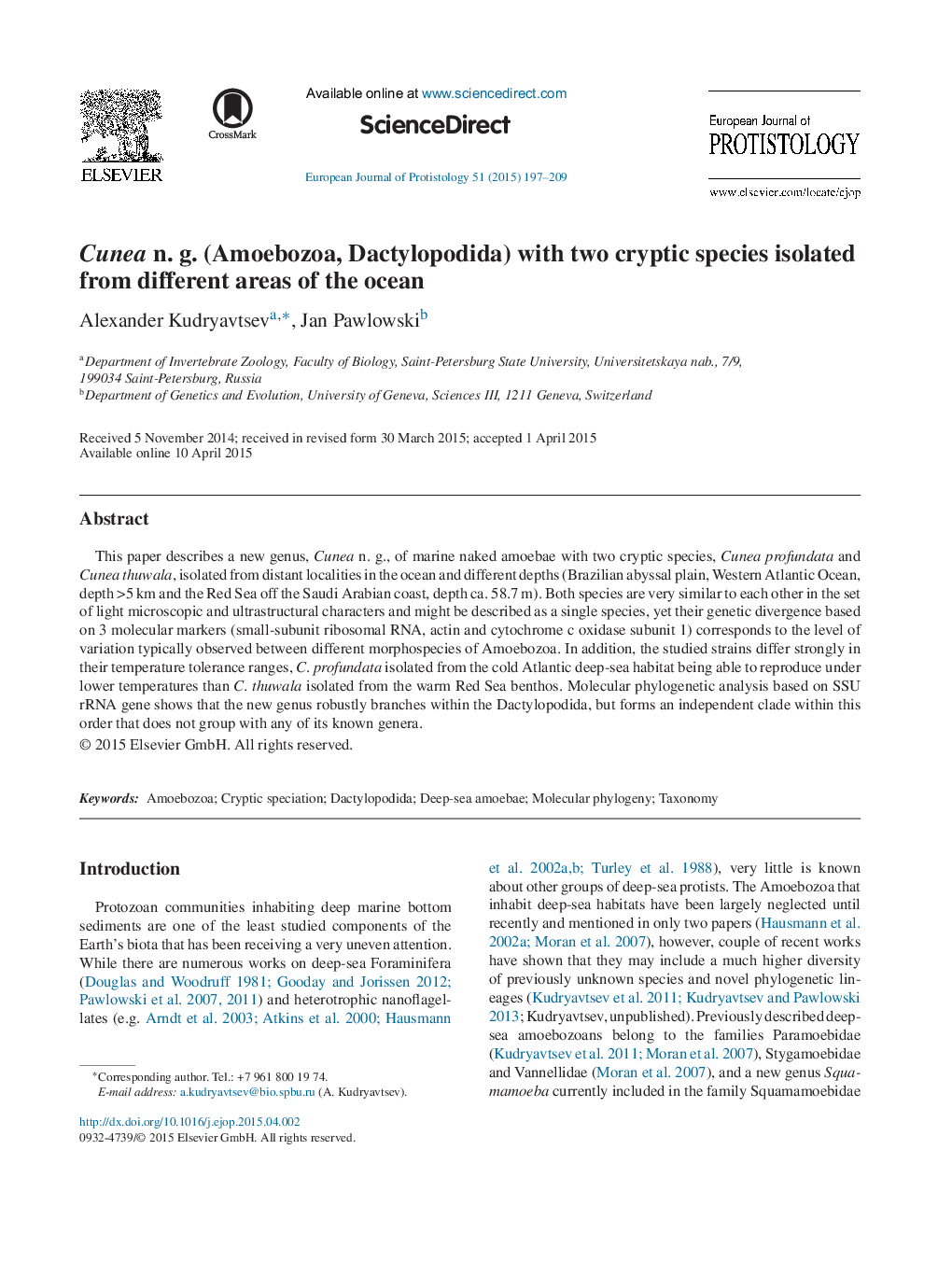| Article ID | Journal | Published Year | Pages | File Type |
|---|---|---|---|---|
| 2046216 | European Journal of Protistology | 2015 | 13 Pages |
•We isolated two species of Amoebozoa from deep Western Atlantic and the Red Sea.•Both show hardly detectable differences in morphology and ultrastructure.•Yet, significant differences in the temperature tolerance ranges and gene sequences.•The two species are included in a new genus Cunea within the Dactylopodida.
This paper describes a new genus, Cunea n. g., of marine naked amoebae with two cryptic species, Cunea profundata and Cunea thuwala, isolated from distant localities in the ocean and different depths (Brazilian abyssal plain, Western Atlantic Ocean, depth >5 km and the Red Sea off the Saudi Arabian coast, depth ca. 58.7 m). Both species are very similar to each other in the set of light microscopic and ultrastructural characters and might be described as a single species, yet their genetic divergence based on 3 molecular markers (small-subunit ribosomal RNA, actin and cytochrome c oxidase subunit 1) corresponds to the level of variation typically observed between different morphospecies of Amoebozoa. In addition, the studied strains differ strongly in their temperature tolerance ranges, C. profundata isolated from the cold Atlantic deep-sea habitat being able to reproduce under lower temperatures than C. thuwala isolated from the warm Red Sea benthos. Molecular phylogenetic analysis based on SSU rRNA gene shows that the new genus robustly branches within the Dactylopodida, but forms an independent clade within this order that does not group with any of its known genera.
